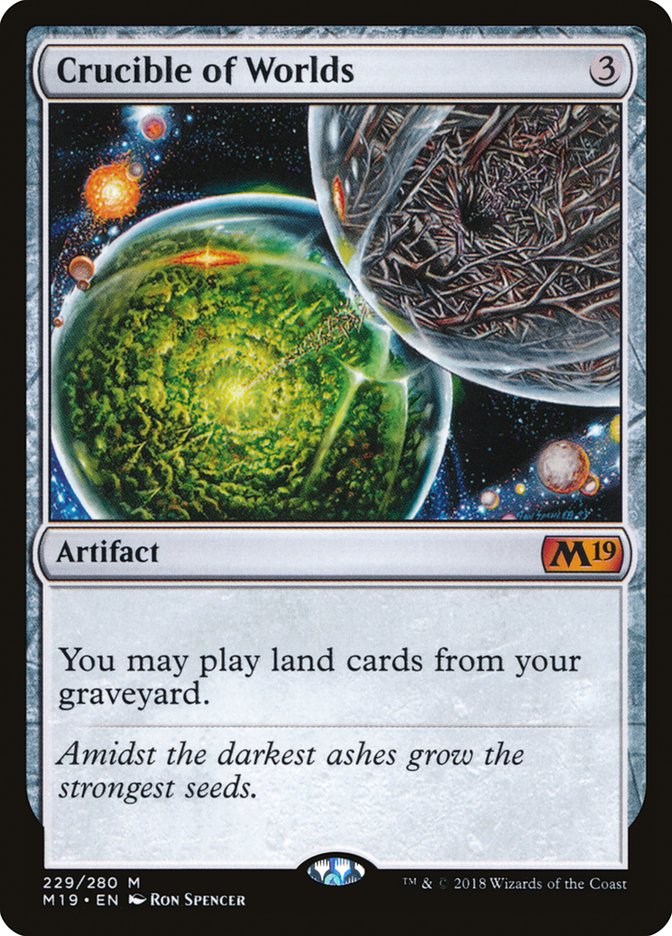Designing a Cube is about so much more than selecting the individual cards that work best together. One of my favorite Cubes is Eric Klug’s Pro Tour Cube. The premise is that every single card that has been in a Pro Tour-winning decklist is in the Cube. Is it balanced? Not really. Are there cards that are much worse than the rest? Quite a few. But the experience drafting it is wonderful and novel. And it has an amazing nostalgia factor. You can draft a specific deck that won a Pro Tour, or at least something that resembles it. It’s the epitome of a historical experience and I love it.
There are so many types of Cubes. Cubes like Eric I like to call Novelty Cubes. These are more unusual, like Ryan Overturf Grixis Cube or Spooky Cube. My Combat Cube. Pauper Cubes. Modern Cubes. Powered Cubes. The list goes on. But behind each one, there’s a person. A designer with a vision and a philosophy to create their perfect world.
In these worlds, archetypal support comes at the cost of archetypal diversity. This isn’t to say that a more diverse set of archetypes is better than not, but rather that there are two schools of thought when it comes to Cube design:
1. Support each archetype to the fullest and hence only offer one or two per color-combination.
2. Attempt to foster a draft environment with a very large set of possible draft archetypes.
Both philosophies require meticulous thought. If a minimal number of archetypes are supported, balancing them is a lot more important or else the environment will feel stale quickly, as there is no escape from the best deck. On the other hand, with a maximal number of archetypes, there are often a large amount of parasitic cards. Parasitic, as it’s defined, is often discussing cards that are only playable in one archetype. However, with a small amount of archetypes, these cards no longer feel bad as they help players find the proper lanes. With a much more diverse set of archetypes, there ends up being many cards that are in sideboards more often than not. It’s the price a designer pays to enable such a large number of archetypes.
What are the tradeoffs of these different philosophies? I’ve already discussed diversity, but is that all?
Sideboarding
Sideboarding in Cube is one of the most skill-testing aspects of the format. It’s common to be flush with playables and properly picking cards for the sideboard and architecting a sideboard game plan is crucial to success. The depth of sideboarding in Cube favors Cubes with a smaller set of archetypes. It’s easier to target decks after sideboard and the selection of generically playable sideboard options is higher. Furthermore, there will be fewer cards that don’t have a home and hence also a deeper sideboard.
Replayability
Cubes with a smaller set of archetypes have a lifespan. Most Limited formats have a lifespan of about six to eight weeks before they get stale for many players. A fully diverse Cube basically never gets stale because within hundreds of drafts, the decks are so distinctive that the experience never gets old. For the typical Cube with a small set of archetypes, after a couple of months of frequent drafting, it needs an update. Archetypes change, incentives change, and then the Cube is no longer stale for the next couple of months. It requires a bit more effort to maintain, but this process can also be very rewarding as the Cube goes through so many different iterations.
Drafting Decisions
This goes both ways, but slightly favors a diverse environment. The more ways individual cards interact, the more complex decisions become in draft. If Selesnya must be a token archetype, navigating Pack 2 and Pack 3 as a Selesnya drafter has fewer decisions. With more archetypes, picks stay exciting. However, this still comes at a cost. If a player drafts a Selesnya Tokens deck, it’s now possible to see a pack with green and white cards that are all suboptimal for that deck. That tokens deck will likely be worse than the one in the Cube that supports fewer archetypes. And this compounds with the lack of sideboard cards.
Overall, there are plenty of reasons to create a Cube with a variety of number of archetypes. This is up to the designer depending on the environment they would like to foster. Remember to keep the people who play the Cube in mind when designing, and happy Cubing!


